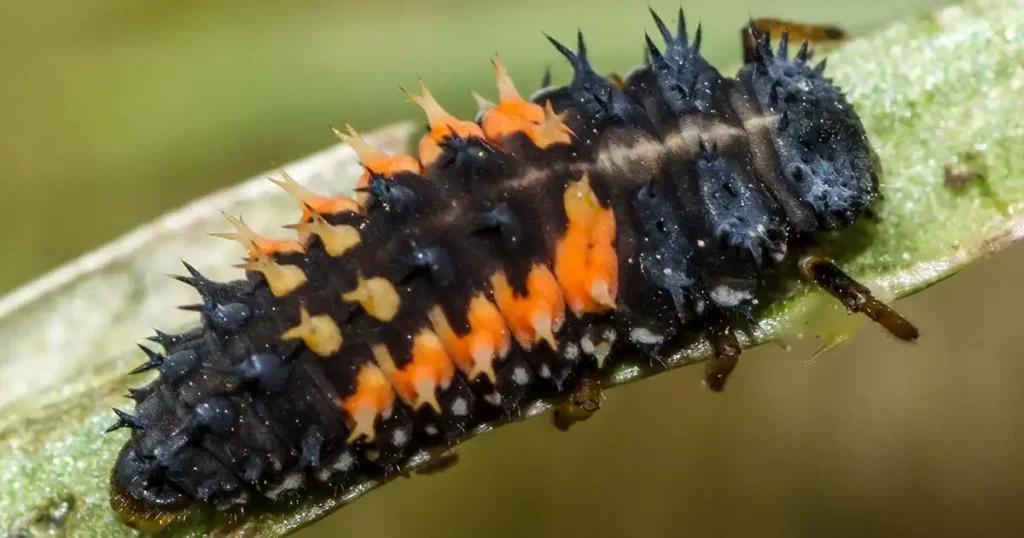The first ladybugs appeared on Earth around 53 million years ago. They evolved from a group of beetles called the Coccinellidae.
They are found all over the world with over 5000 different species. They are found in a variety of colors and patterns, but the most common ladybugs are red with black spots.
Ladybugs are an important part of the ecosystem, and they are believed to bring good fortunes in many cultures.
In this article, we will cover 15 interesting facts about Ladybugs.
15 Lesser-Known Facts about Ladybugs that Will Make You Fall in Love with Them
Fact #1: Ladybugs are not actually bugs, but beetles
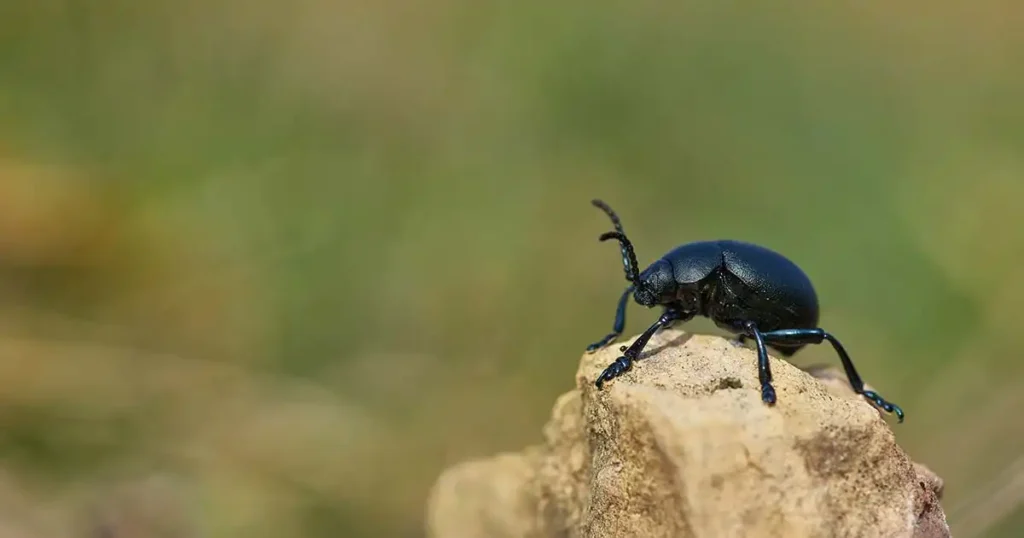
Ladybugs are not actually bugs, but beetles. The term “bug” is often used commonly to refer to any small and crawling insect.
Also, biologically, a bug is a specific type of insect that has sucking mouthparts and the Ladybugs do not have that. So even biologically, they are not bugs. They are actually beetles – the type of insect that has chewing mouthparts.
Beetles are the largest order of insects in the world, with over 350,000 species. And if we talk about Ladybugs, they have over 5,000 species worldwide.
However, there are also ladybugs that are yellow, orange, green, and even blue in color.
The number of spots on a ladybug’s back can vary from one to 22. Ladybugs range in size from about 1/8 to 1/2 inch long.
Fact #2: There are over 5,000 species of ladybugs in the world
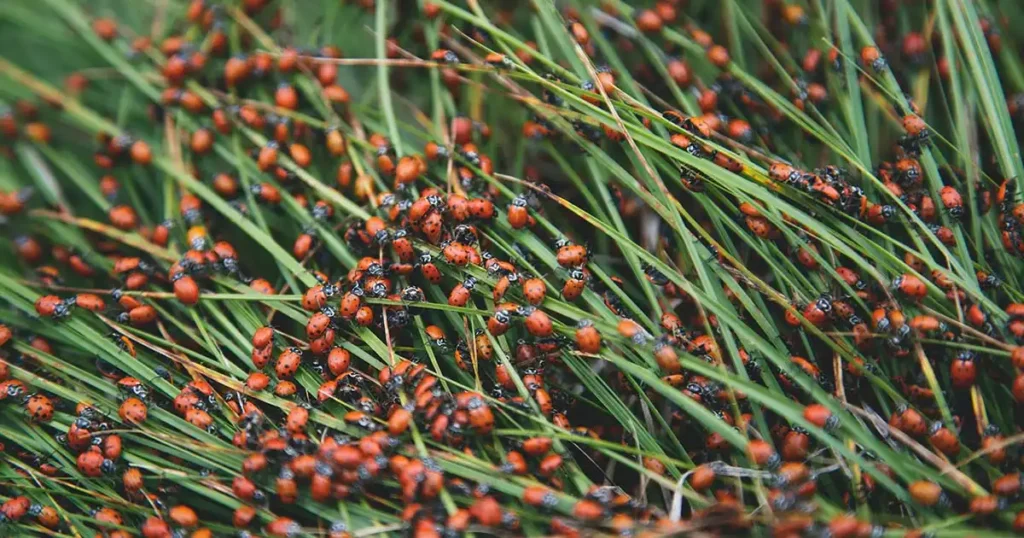
There are over 5,000 species of ladybugs in the world.
The ladybugs are found on every continent except Antarctica. The most common ladybugs are red in color with black spots.
Fact #3: Ladybugs Help in Pest Control
Ladybugs are considered to be beneficial insects and are often used in biological control programs to help control pests.
They are also popular pets and are often kept in insectariums.
Fact #3: The most common ladybug in North America is the seven-spotted
The seven-spotted ladybug is the most common ladybug in North America. It is about 1/4 inch long and has a red back with seven black spots.
The seven-spotted ladybug is a predator and eats other insects, such as aphids, which are plant pests.
These ladybugs are also important for pollination. It helps spread pollen from one flower to another as it feeds on nectar.
Fact #4: Ladybugs are predators and eat other insects, such as aphids, which are plant pests
Ladybugs are predators and they eat other insects, such as aphids, which are plant pests. Aphids are small insects that suck the sap from plants, which can damage the plants.
One ladybug can eat up to 5,000 aphids in its lifetime!
Here are some of the insects that ladybugs eat:
- Scale insects
- Mealybugs
- Whiteflies
- Thrips
- Spider mites
- Caterpillars
- Eggs of other insects
Fact #5: Ladybugs Are a Valuable Asset to Gardens and Landscapes
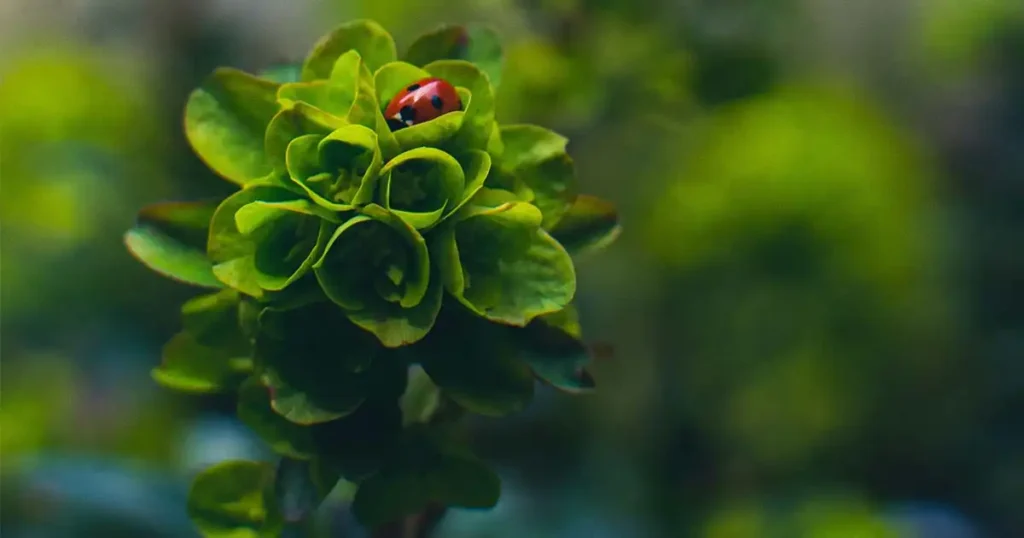
Ladybugs are a valuable asset to gardens and landscapes. As we have covered earlier, they help us with pest control without the use of harmful chemicals.
If you love gardening and have a garden, you may want to consider attracting ladybugs to your yard.
There are a few things you can do to attract ladybugs:
- Plant flowers that attract ladybugs, such as marigolds, dill, and fennel.
- Provide a water source for ladybugs, such as a birdbath or shallow dish of water.
- Avoid using pesticides in your garden.
Fact #6: The Life Cycle of a Ladybug has Four Stages
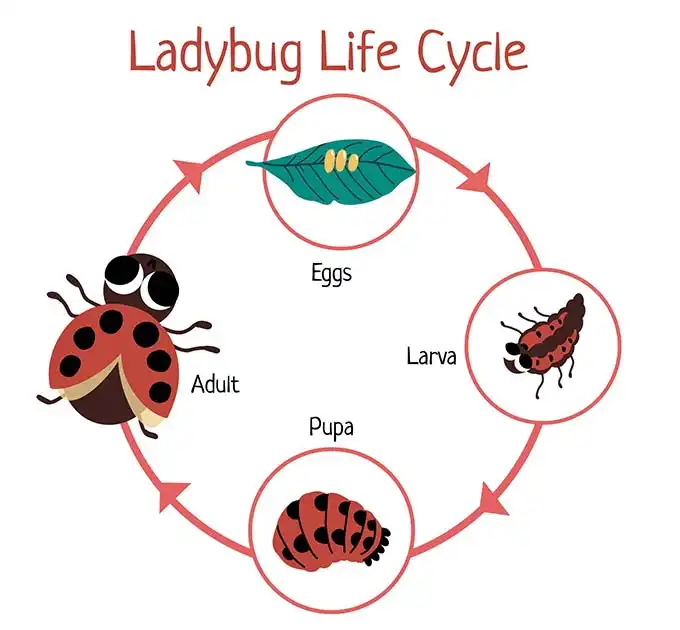
The life cycle of a ladybug consists of four stages: egg, larva, pupa, and adult.
The egg stage is very short, lasting only a few days.
The larval stage is the longest stage, lasting about two weeks.
The pupa stage is also short, lasting only a few days.
The adult stage is the longest stage, lasting about one to two years.
Fact #7: Ladybugs Can Live for Up to a Year
The lifespan of a ladybug varies from species to species. However, most ladybugs live for one to two years.
The Asian ladybugs have the shortest lifespan. They only live for about six months.
The two-spotted ladybugs have the longest life span. They live for up to three years.
The lifespan of a ladybug is also affected by the environment. Ladybugs that live in warm climates tend to live longer than ladybugs that live in cold.
Ladybugs that have plenty of food and water also tend to live longer than ladybugs that do not.
Fact #8: Ladybugs Are Attracted to the Yellow Color
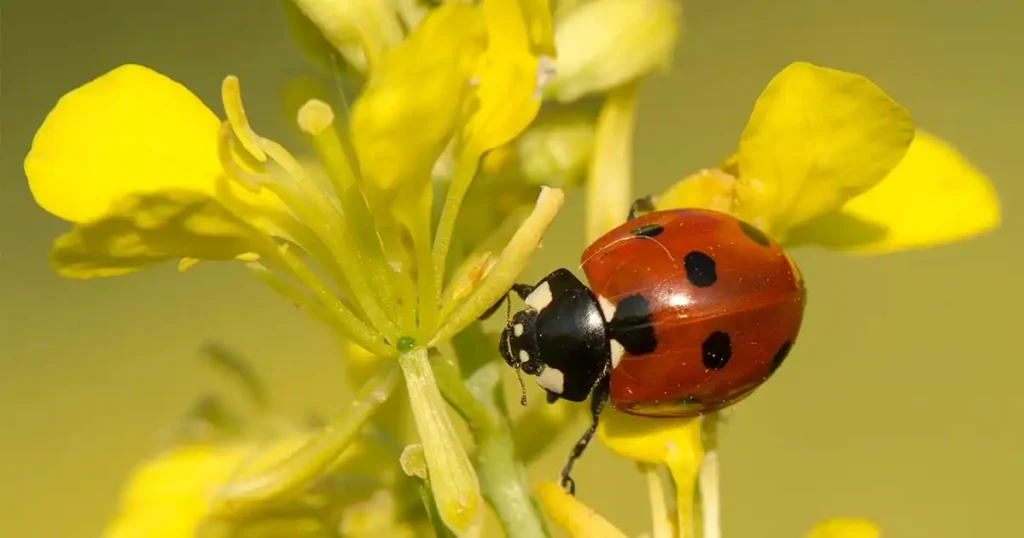
Ladybugs are attracted to yellow colors. This is because yellow is a bright color that stands out from the environment.
The ladybugs have good vision and they can see yellow from a long distance as well. They are more likely to land on the yellow flowers when they see them.
Many of you must be wondering why they get attracted to the yellow colors.
Well, one reason is that yellow is a sign of food. Many of the insects that ladybugs eat, such as aphids, are also attracted to the yellow color.
Another reason is that yellow is a sign of warmth. Ladybugs are cold-blooded insects, so they are attracted to warm colors.
So, if you want to attract ladybugs to your garden, start planning yellow flowers.
It is surprising but you can also put out yellow-colored objects, such as rocks or leaves.
Fact #9: Ladybugs Can Fly, But Don’t Fly Well
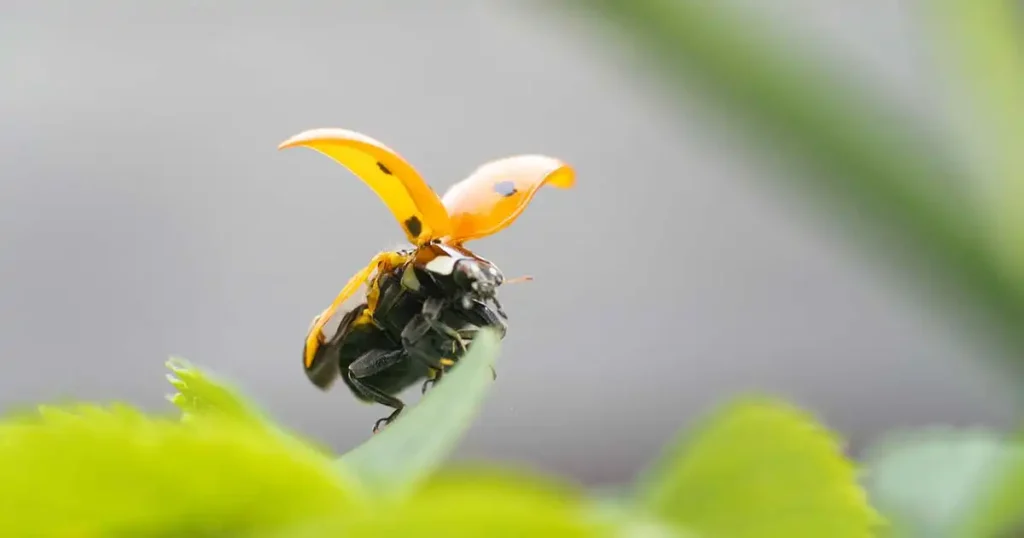
Ladybugs can fly, but they are not that good at it.
Their wings are too small and delicate they can use for shorter flights. They often get blown off by the wind and easily get injured if they hit something. Surprisingly, even if they get injured, they can still survive.
Despite their poor flying skills, ladybugs are still able to travel long distances. They often migrate to find food and mates.
They mostly fly at night when the air is cooler. They can travel hundreds of miles during their migrations. They are a hardy species and they are able to adapt to new environments very easily.
Fact #10: Ladybugs release a foul-smelling liquid when they are threatened
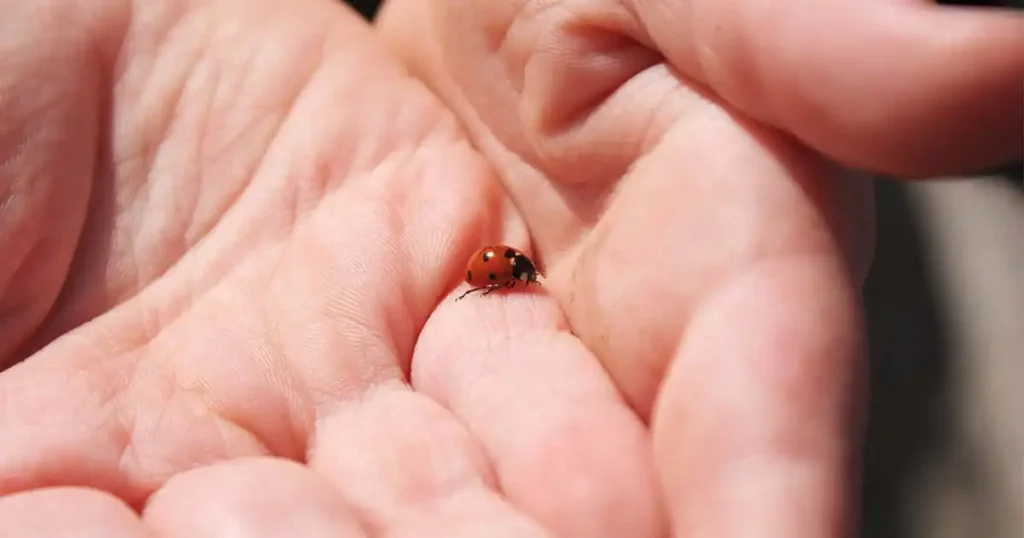
When they are threatened, ladybugs release a foul-smelling liquid as a defense mechanism.
The liquid is produced by glands in the ladybug’s legs and contains a chemical called hydroquinone. Which is a bitter-tasting compound that can irritate the skin and eyes of predators.
The compound also has a strong odor that prevents them get eaten by their predators.
This foul-smelling compound is not harmful to humans. However, if you are handling a ladybug and it releases the liquid, it is important to wash your hands immediately. Because it can be unpleasant in smell.
There are many other insects, such as stink bugs and skunks that use a similar strategy to deter predators.
Fact #11: Ladybugs are considered good luck in many cultures
In many cultures, there is a very strong belief that ladybugs bring good fortune. This belief is thought to have originated in Europe.
In the Middle Ages, ladybugs were associated with the Virgin Mary. They were seen as a symbol of her protection and love.
In some cultures, the number of spots on a ladybug’s back is said to be a lucky number.
For example, in Japan, a ladybug with seven spots is said to bring seven years of good luck. While in China, a five-spotted ladybug is said to bring good luck in business.
In some cultures, ladybugs are also seen as symbols of fertility and motherhood.
In Germany, it is believed that if a ladybug lands on a pregnant woman, the baby will be a girl. While in Russia, it is believed that if a ladybug lands on a child, the child will be healthy and happy.
Ladybugs are often used in jewelry, clothing, and other decorative items. They are also a popular subject in children’s books and stories.
Here are some of the reasons why ladybugs are considered good luck in many cultures:
- They are predators of aphids, which are plant pests.
- They are brightly colored and often have spots, which are considered to be lucky in many cultures.
- They are associated with the Virgin Mary in some cultures.
- They are said to bring good luck in love, marriage, and fertility.
- They are seen as a sign of good weather.
- They are harmless to humans.
If you see a ladybug, you can also make a wish. Some people believe that if you count the number of spots on a ladybug’s back, it will bring fortune for that many years.
Fact #12: The Name “Lady” Refers to the Virgin Mary
The name “ladybug” is thought to have originated in Europe in the Middle Ages, when farmers would pray to the Virgin Mary for the protection of their crops from insects.
When ladybugs arrived and ate the pests. They protected crops from insects. So the farmers named them “beetles of Our Lady” or “ladybirds” in her honor.
The name eventually made its way to the United States, where it is still used today.
Ladybugs are also associated with the Virgin Mary because of their bright red color, which is often seen as a symbol of her love and protection.
Moreover, the number of spots on the back of the ladybug is sometimes said to represent the seven sorrows or joys of the Virgin Mary.
Fact #13: Ladybug Larvae Resemble Tiny Alligators
Ladybug larvae resemble tiny beige alligators. They are long and slender with a hard segmented body. They have a pair of sharp mandibles that they use to eat aphids and other small insects.
These larvae are often found under leaves or on the underside of branches.
Here are some of the similarities between ladybug larvae and alligators:
- They are both long and slender.
- They both have a hard, segmented body.
- They both have a pair of sharp mandibles.
- They both live in similar habitats.
- They both play an important role in the ecosystem.
However, there are also some key differences between them as well:
- Ladybug larvae are much smaller than alligators.
- Ladybug larvae are not venomous.
- Ladybug larvae do not have scales.
- Ladybug larvae do not have a tail.
Overall, ladybug larvae are fascinating creatures that share some similarities with alligators.
Fact #14: Ladybugs Practice Cannibalism
Ladybugs do practice cannibalism. This behavior is very common in ladybugs. They eat other ladybugs’ larvae, eggs, and even adults if a scarcity of food is there.
There are a few reasons why ladybugs might practice cannibalism. One reason is that they are predators and they are naturally inclined to eat other insects.
Another reason is that ladybugs are social insects. They live in colonies with limited amounts of food. They compete with each other for food. This competition can lead to cannibalism.
Well, this behavior is natural in ladybugs. However, ladybugs eating each other can have negative consequences on their population and the environment as well. This can lead to an increase in pest populations, which can damage crops and plants.
There are a few things that can be done to reduce cannibalism in ladybugs.
One thing is to provide ladybugs with plenty of food by planting flowers that attract aphids, which are a ladybug’s favorite food.
Fact #15: Ladybugs’ Numbers Are Declining
Ladybug numbers are declining globally. There are a number of factors that are thought to be contributing to this decline, including:
- Habitat Loss: Ladybugs need a variety of habitats in order to survive, including forests, grasslands, and meadows. As these habitats continuously getting destroyed, ladybugs are losing their homes.
- Use of Pesticides: Pesticides are extremely harmful to ladybugs. These pesticides can directly kill the ladybugs. Moreover, they can harm the ladybugs’ food sources.
- Climate Change: Climate change is making it more difficult for ladybugs to find food and mates.
- Invasive species: Invasive species can compete with ladybugs for food and habitat.
You may also like:
10 Amazing Facts About the Universe
Conclusion
We hope you must have loved reading these amazing facts about ladybugs. We believe that it’s extremely important for people to learn more about ladybugs so that we can appreciate their value.
How many of these facts about ladybugs did you already know? If we missed something, put them in the comment section below.


